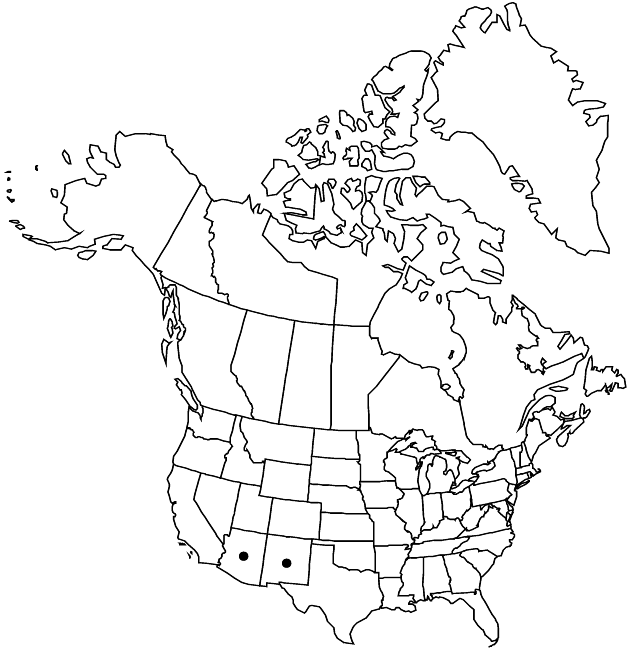Difference between revisions of "Acourtia thurberi"
Phytologia 27: 231. 1973.
Common names: Thurber’s desertpeony
Basionym: Perezia thurberi A. Gray Pl. Nov. Thurber., 324. 1854
FNA>Volume Importer |
imported>Volume Importer |
||
| (5 intermediate revisions by 2 users not shown) | |||
| Line 8: | Line 8: | ||
}} | }} | ||
|common_names=Thurber’s desertpeony | |common_names=Thurber’s desertpeony | ||
| − | |basionyms={{Treatment/ID/ | + | |basionyms={{Treatment/ID/Basionym |
|name=Perezia thurberi | |name=Perezia thurberi | ||
|authority=A. Gray | |authority=A. Gray | ||
| + | |rank=species | ||
| + | |publication_title=Pl. Nov. Thurber., | ||
| + | |publication_place=324. 1854 | ||
}} | }} | ||
|synonyms= | |synonyms= | ||
| Line 35: | Line 38: | ||
-->{{#Taxon: | -->{{#Taxon: | ||
name=Acourtia thurberi | name=Acourtia thurberi | ||
| − | |||
|authority=(A. Gray) Reveal & R. M. King | |authority=(A. Gray) Reveal & R. M. King | ||
|rank=species | |rank=species | ||
| Line 50: | Line 52: | ||
|publication year=1973 | |publication year=1973 | ||
|special status= | |special status= | ||
| − | |source xml=https:// | + | |source xml=https://bitbucket.org/aafc-mbb/fna-data-curation/src/2e0870ddd59836b60bcf96646a41e87ea5a5943a/coarse_grained_fna_xml/V19-20-21/V19_8.xml |
|tribe=Asteraceae tribe Mutisieae | |tribe=Asteraceae tribe Mutisieae | ||
|genus=Acourtia | |genus=Acourtia | ||
Latest revision as of 19:56, 5 November 2020
Plants 40–150 cm (stems sulcate to striate distally, densely glandular). Leaves cauline and/or basal; sessile; blades ovate to ovate-elliptic, 1.5 (cauline)–18 (basal) cm, bases shortly sagittate or clasping, margins acerose-denticulate, faces densely glandular-puberulent. Heads in subcongested corymbiform arrays. Involucres obconic to campanulate, 7–9 mm. Phyllaries in 2–3 series, oblong-oblanceolate, apices acuminate, abaxial faces densely glandular-hairy. Receptacles alveolate, glandular. Florets 3–6; corollas lavender-pink (purple), 7–12 mm. Cypselae subcylindric to subfusiform, 3–7 mm, glandular; pappi bright white, 8–9 mm (rigid). 2n = 54.
Phenology: Flowering Oct–Nov.
Habitat: Gravel and caliche soils in warm Sonoran desert scrub
Elevation: 100–200 m
Distribution

Ariz., N.Mex., Mexico (Chihuahua, Durango, Sonora).
Discussion
Selected References
None.
Lower Taxa
None.